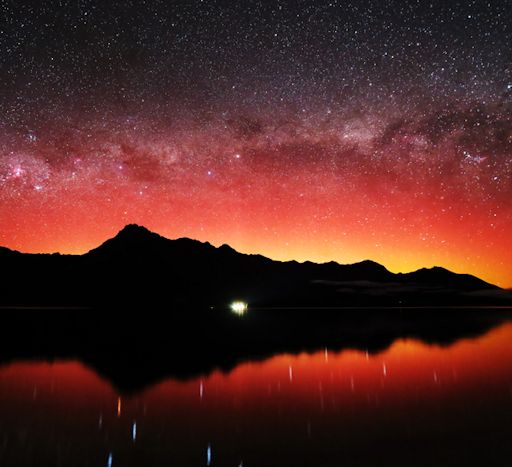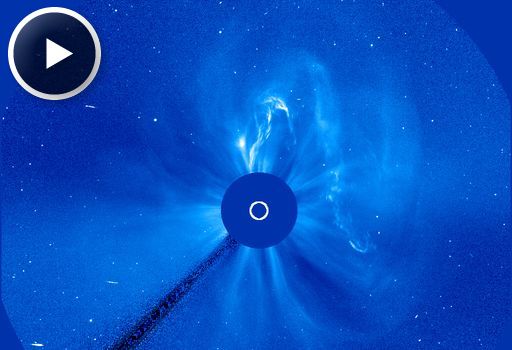When is the best time to see auroras? Where is the best place to go? And how do you photograph them? These questions and more are answered in a new book, Northern Lights - a Guide, by Pal Brekke & Fredrik Broms. | | |
IS COMET ISON POISED TO DISINTEGRATE? As Comet ISON passes Mars en route to the sun this week, the comet is still faint. Nevertheless, many experts believe the comet is on track to become a bright sungrazer in late November. Astronomer Ignacio Ferrin of the University of Antioquia Institute of Physics in Colombia disagrees. Ferrin believes Comet ISON is about to disintegrate. The light curve of ISON, he argues, resembles the light curves of other comets that have fallen apart. If he's right, the "Comet of the Century" could turn into a century-class disappointment. Stay tuned to the Comet ISON Photo Gallery for updates.
RED AURORAS: On October 2nd, a CME hit Earth's magnetic field, sparking a G2-class geomagnetic storm. Sky watchers on both ends of the Earth saw auroras; many of the lights were rare shades of red. Minoru Yoneto photographed this example from Queenstown, New Zealand:

"This is how the sky looked 11 hours after the CME impact," says Yoneto, who used a Canon EOS 6D digital camera to record the reds.
Auroras are usually green, and sometimes purple, but seldom do sky watchers see this much red. Red auroras occur some 300 to 500 km above Earth's surface and are not yet fully understood. Some researchers believe the red lights are linked to a large influx of electrons. When low-energy electrons recombine with oxygen ions in the upper atmosphere, red photons are emitted. At present, space weather forecasters cannot predict when this will occur.
During the storm, even more red auroras were observed over the United States in places like Kansas, Ohio, and Oklahoma. Browse the gallery for examples. Aurora alerts: text, voice.
Realtime Aurora Photo Gallery
THE INSTIGATING CME: The CME that hit Earth's magnetic field today left the sun on Sept. 30th, propelled by an erupting magnetic filament. SOHO photographed the CME at the start of its journey, racing away from the sun at 2 million mph (900 km/s):

The CME was impressive, but the underlying explosion was even more so. One movie from NASA's Solar Dynamics Observatory shows the self-destructing filament in the context of the whole sun. Another movie zooms in for a closeup. It catches the filament ripping through the sun's atmosphere and leaving behind a beautiful "canyon of fire."
NOAA forecasters working through the government shutdown estimated an almost-even 45% chance of polar geomagnetic storms when the CME arrived. The CME justified those relatively high odds, sparking a G2-class geomagnetic storm around the poles. Geomagnetic storm alerts: text, voice.
Realtime Space Weather Photo Gallery
Realtime Comet ISON Photo Gallery
Realtime Noctilucent Cloud Photo Gallery
[previous years: 2003, 2004, 2005, 2006, 2007, 2008, 2009, 2011]

